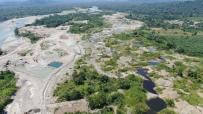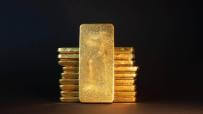
At kilometer ten of the Federico Basadre road and just over an hour from the center of Pucallpa, capital of the Ucayali region, some of the most important coal plants of the Peruvian Amazon are located. In these transformation centers, where three to five people work with blades and without any protection, the artisanal kilns installed give off smoke by burning wood residues at high temperatures. Some of them come forest species threatened by their overexploitation.
This is the process for producing charcoal, which will then be transported in bags along the central highway to Lima, to be sold in supermarkets and Internet stores. However, it is impossible to know the origin of the wood that gave rise to this coal in most of the brands marketed in the country. The labeling does not mention inputs or species.
In this context, and to know what species are used for the production of charcoal marketed in Lima, OjoPúblico bought a random sample (12) of six different brands of this product, sold in the main supermarkets in Lima and in online stores, and requested an anatomical analysis from the laboratory of Universidad Nacional Agraria La Molina.
The research found in the samples from Oregon Foods and Ecobrasa, qualified as gourmet foods, the presence of vulnerable tree species, such as shihuahuaco. These brands offer their products as “natural and responsible” origin or coming from “certified sustainable forests”.
In recent years, scientists have warned of the risk of extinction of shihuahuaco, but the Peruvian Government has not included it in the list of threatened species. At the same time, as OjoPúblico reported in extensive research in 2021, at least half of all wood exported from Peru comes from this tree.
Despite the warnings, the coal sector has also set eyes at this forest species, which is mainly extracted from Ucayali and Madre de Dios, regions with historical levels of forest loss in 2020. Both accounted for more than 70,000 hectares deforested, almost 35 per cent of the total in the country.
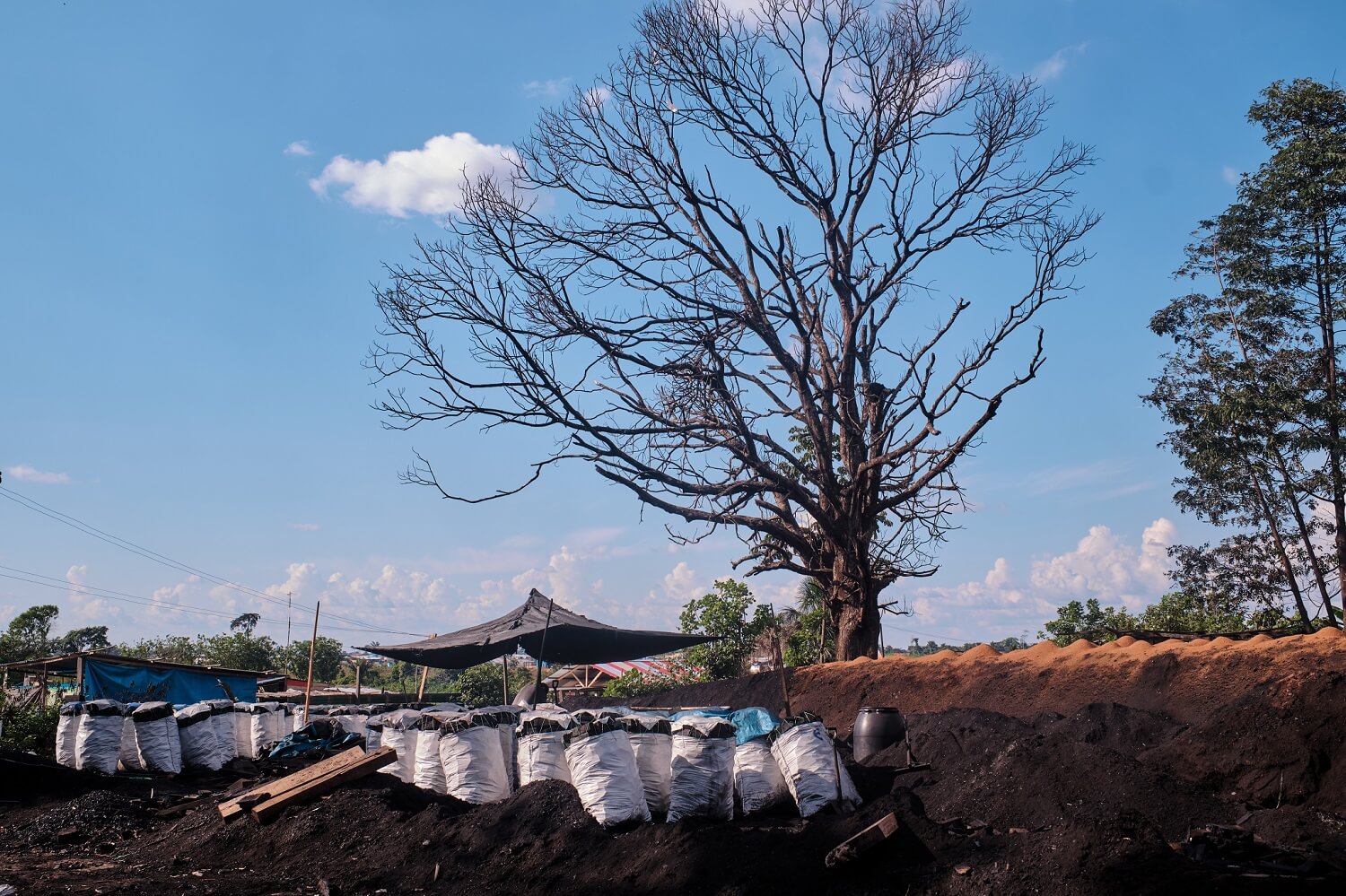
TRANSFORMATION. The charcoal generated in the Amazon originates from wood residues, some of which are from species threatened by overexploitation, such as the shihuahuaco.
Photo: OjoPúblico.
In addition to Oregon Foods and Ecobrasa, as OjoPúblico proved in the offer available on the Internet, shihuahuaco coal is sold in the Lima districts of Ate, Lurin and Santa Anita, at S/2.50 to S/4.00 per kilo. a price of three to seven times less than that of the brands analyzed. In other cases, this product is available in the catalogs of Facebook users who —not bound by industry regulations — do not provide further information on the origin of the product, which in bags sold by weight and without registration or information of the source of the product.
In spite of the little detail reported by forestry directorates to the National Forest Service (SERFOR), official figures show that all the shihuahuaco coal that came to Lima’s businesses in 2021 was produced in Madre de Dios and Ucayali. Both Amazonian territories also concentrate 85.7% of the total charcoal declared by regional governments in the category of “various” species, i.e., it is not possible to identify the specific wood type it belongs to.
Neither are environmental standards defined for the production of this fuel. In Ucayali and Madre de Dios, artisanal kilns are used, which, over two to four weeks, release particles that exceed the levels allowed in the air environmental quality standards .
Additionally, the sector does not adequately supervise the charcoal processing centers in the Amazon, as well as in the storage and sale places in Lima, from where it then arrives in supermarkets or virtual shops. The regulatory loopholes surrounding the processing of this input, and the deficient control of the production centers cause the origin of this star product in the grills in homes and restaurants in the country to be dubious, to say the least.
Suppliers and Distributors
The chain of the charcoal sold on the Peruvian market include the companies in charge of its production and packaging. In the case of Oregon Foods, active since 2002 and has more than 200 payroll workers, this information is found at the back of its packaging and mentions Olmos Carbón SAC as responsible for both activities.
This company, with operations since 2012, has two workers on the payroll and, according to Oregon Foods coal wrapping, has an authorization from the National Forest and Wildlife Service (SERFOR), in effect since 2017, to store and market forest products.
OjoPúblico, through a request for access to information, applied for more detail of this permit, but the institution responded with only two files that did not include the technical documents provided by the company to support its authorization, approved by engineer Marcopolo Sanchez Corillocla. The information provided by the firm details, among other things, the forest species of the charcoal stored and distributed to its customers.
According to various forestry specialists consulted, SERFOR’s authorization only represents a “sign-off” for a person or company to operate commercial premises or charcoal warehouse. but it does not endorse or guarantee the legal origin of the wood which is then transformed into this product. This information, the interviewees agree, is found in the forest transport guides used by charcoal producers and that they must have before any supervision conducted by the officials of the forest managements or directorates of the regions where this input is produced.
Last year, Oregon Foods also offered in organic and virtual stores, charcoal claimed to be from shihuahuaco, and even had a timber sustainability certification, guaranteed by the Forest Stewardship Council (FSC). Having an FSC label, on paper, provides a sustainable origin for the forest products—such as charcoal—that a company markets, but OjoPúblico has also shown the weaknesses and gaps in this certification.
This green label, according to the code found on the Oregon Foods bag, was awarded to Comercializadora Napa Trading S.A.C, a company that no longer appears on the record of this international label today, as its period ended in June 2021. To date, Oregon Foods has removed the FSC label from its packaging.
OjoPúblico contacted the company, but at the close of this publication the group of questions sent to learn the reasons for its choice of shihuahuaco coal, and how the guaranteed the sustainability of its product was not attended.
Another company claiming to have “sustainable certificate” for its charcoal is Ecobrasa , but there is no detail to support its claim. This product is marketed from the company’s virtual shop and in 2021 it had some stock in a supermarket in the Arequipa region. The packaging includes no code or reference to the authorization given by SERFOR to the company in charge of such packaging. According to the anatomical analysis requested by OjoPúblico, Ecobrasa charcoal coming from shihuahuaco, as well as from the manchinga species.
The company only indicates that its product has been “selected and packaged by Briquetas Peru SAC”, a company with activities since 2016 and with only one worker in their payroll. This company has no current authorization from SERFOR to store or market coal in Lima and has Carlos Salvador Cabrejos Alvarado as the general manager.
When asked about the origin and sustainability of its product, the company did not reply to the emails sent.
In countries such as Chile, brands that market charcoal in supermarkets indicate the species used in their packaging. This is the case of Ailencutral, which claims to be made of hawthorn or of Beef Maker, which claims to have its origin in white quebracho, a species that grows in the center of South America.
While in Peru, despite not having to specify SERFOR’s forest authorization code or other information on the legal origin of its product, the National Institute for the Defense of Competition and the Protection of Intellectual Property (INDECOPI) told OjoPúblico that consumers can report to them through in their different channels “any situation that violates their rights, including the right to information”
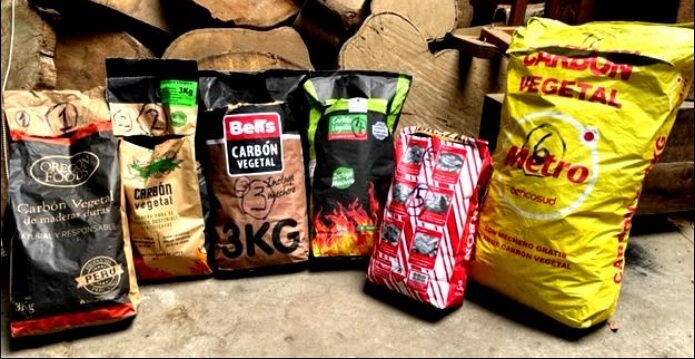
SAMPLES.
OjoPúblico took a dozen charcoal samples of six brands to a specialized laboratory to identify the species that had been used for this product.
Photo: Laboratory analysis of the Universidad Nacional Agraria La Molina.
Analysis in supermarkets
In view of the little detail they offer their customers about the origin of their product, OjoPúblico determined the species of charcoal wood sold by the main supermarkets in the country. Samples were analyzed from the packaging of Bell’s, Tottus, Metro and Braza, a brand that is also offered in gas stations. The results showed several species, such as manchinga, capirona, copaiba, mashonaste, huayruro, moena and oje.
In all the cases reviewed, charcoal is sold with no indication of any certification supporting the sustainability of the product and only includes a forestry authorization approved by SERFOR and granted to individual or legal persons. Bell’s charcoal packaging shows it has a SERFOR permit, granted in June 2017 to Lida Milagros Ruiz Agapito.
This documents mentions that the product stored will be “charcoal [from] sawmill”, while the field detailing the species used is empty. In spite of this omission, the authorization was granted to Ruiz Agapito, who, through a proof of possession, has her warehouse registered in the district of San Martin de Porres.
SERFOR’s administrative resolution, dated June 21, 2017, was approved by engineer Julio Napoleon Jeri Ochoa, then director of the Lima Technical Forestry and Wildlife Administration. This document also mentions that the technical report was prepared by forestry engineer Susana Esther Cotito Cartagena.
The Bell’s charcoal bag, in addition to the Serfor’s code, it also indicated that it is produced and packaged by Global CC Peru SAC, a company with operations since 2013, domiciled in the district of Lince and with 29 workers in the payroll . The general manager of this company is Rosa Campos Rosas.
In supermarkets —as well as in the Listo chain of gas stations— the Braza brand predominates, which in packaging, besides reporting that it is ‘100% plant-based’, does not mention any support regarding its sustainability. The presentation mentions that the product was packaged by Global CC Peru SAC, the company with the same role for Bell’s coal and with an authorization from Serfor in force since 2016. This company has also been in charge of the coal for Tottus with authorization from Serfor, approved in April 2016. On the Braza web portal, the section on certifications is “being update”.
In September last year, the Lima technical forestry administration, together with the environmental police, intervened some premises that did not have authorization from the sector, where they found forest products from Global de Peru SAC “without documents to support their legal origin”. The document, to which OjoPúblico had access, also details that more than 35 tons of carob coal, more than 39 tons of industrial waste coal and 136.85 cubic meters of fuelwood were seized.
Acta de Intervención Nº 59-... by OjoPúblico Periodismo de In...
In their defense sent to SERFOR in January of this year, Rosa Campos Rosas acknowledged her company’s responsibility for the infringement identified. She added that there was “lack of full knowledge of forestry laws". For this process, on February 23, the Lima forestry authority imposed a fine of more than S/185,000.
In addition, the confiscation of 136.85 cubic meters of firewood and more than 35 tons of carob coal intervened in September 2021 was ordered for not having a legal support of its origin. The forestry authority confirmed, in the administrative resolution to which OjoPúblico has access, that the company did not prove the origin of the product in the forestry transportation guides submitted as part of the inquiries into this case.
Braza’s chief commercial officer, Sussan Arrieta Zavaleta, told OjoPúblico via e-mail that her company was not giving any press statements. Additionally, despite repeated requests to respond the inquiries sent through OjoPúblico, neither Bell’s nor Tottus answered the questions sent.
In the case of Bell’s, they indicated that they could not “give any statement” on the enquiries but indicated that “all purchases made of charcoal is merchandise from authorized suppliers and that they have the respective trade authorizations, provided by Serfor”.
In turn, the Metro’s packaging mentions an authorization from Serfor, approved in June 2017 granted to Importadora La Gaviota SAC. This document was approved by Julio Napoleon Jeri Ochoa, then head of Lima forestry authority, while the technical report was authorized by engineer Susana Cotito Cartagena.
Importadora La Gaviota started operations in 2016 and has eight workers in their payroll to date. The general manager of this company is Luis Antonio Gandolfo Raffo. As part of the approved file, the company pointed out that the coal it will use comes from carob trees and that the product will be located in a rented warehouse in Chorrillos district.
The carob tree is another species that has been at risk of extinction due to its indiscriminate felling in the north of Peru. Throughout 2021, SERFOR’s office in Lambayeque seized more than 200 tons of illegal carob coal.
OjoPúblico consulted SERFOR on the validity of these authorizations and the forestry agency indicated that it was “indefinite”, that is, the people and companies with permits to store and market coal in Lima do not need to renew their permits, but this may be “interrupted” by a precautionary measure or a disciplinary process.
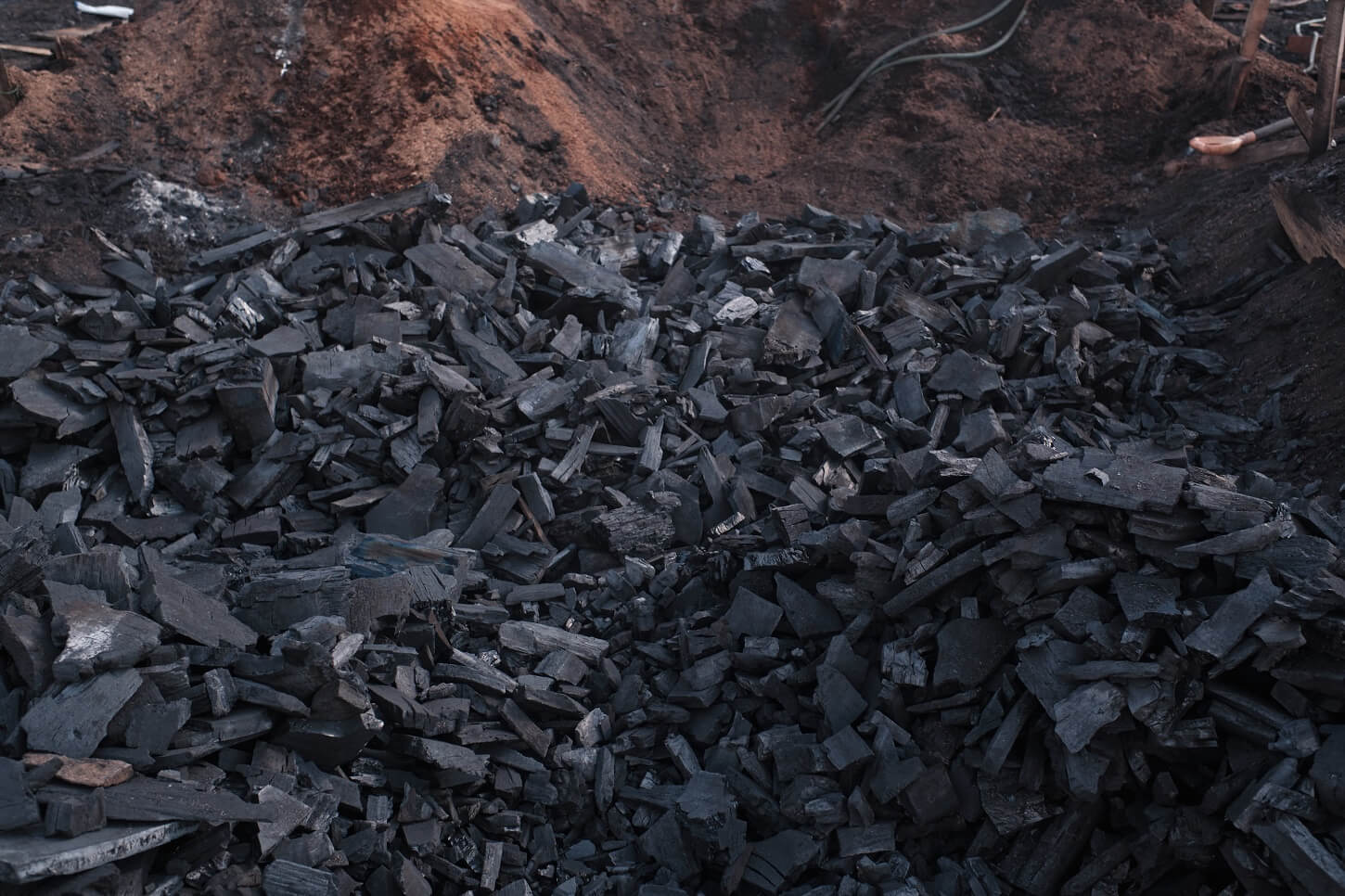
PRODUCTION. In 2021, shihuahuaco charcoal -produced in artisanal kilns installed in sawmills- came from the Amazonian regions of Ucayali and Madre de Dios.
Photo: OjoPúblico.
Weaknesses in the Sector
The sale of coal in supermarkets and virtual shops is not required to submit certifications or support on the sustainability of the product. In the face of this scenario, there have been few actions by the State to ensure that the waste used in producing charcoal has a legal origin. In Lima alone, there are 288 people and companies authorized to store and market charcoal, but since the Forest Law was into force in 2015, there have been only 10 supervisions, all carried out between this year and 2021.
Besides, the forestry sector has no operation book for charcoal warehouses and commercial centers. This document, as with the sawmills since 2021, would allow us to know the details of the ins and outflows of forest products, in this case charcoal. When asked about the approval of this guide, SERFOR noted that they were still “working on the design of the form and the respective instructions for the use and recording of information” that this manual will include.
Additionally, since 2015, the Lima forestry authority has conducted only twelve interventions to shipments of more than 218 tons of charcoal where the origin could not be sustained. To date, the sector has not canceled any charcoal authorization because there were no repeat offenders.
According to its competencies, SERFOR told OjoPúblico that the supervisory and intervention operations are given priority after receiving alerts on its website or social networks. In addition, they carry out unannounced procedures and monitoring activities together with the environmental prosecutor’s office and the police to control the illegal trade and transport of this product.
In turn, the Ministry of Production told OjoPúblico that they are in the stage of “lifting objections” to the project approving the regulation for the primary and secondary transformation of the forest sector. This document indicates that the "pyrolysis" activities, referring to the transformation of timber into charcoal, are the responsibility of the regional governments in their capacity as "regional forestry and wildlife authority".
In addition to the lack of supervision and intervention by the forestry authority in the charcoal trade, there is a lack of regulations to address the potential environmental impact of charcoal production in the Amazon. The Ministry of the Environment (MINAM) has only the limits allowed for industrial activity, but there are no guidelines concerning charcoal processing centers.
In Ucayali alone, 26 companies have declared to the regional government that as part of their activities they are engaged in the production of charcoal. On average, each one generates about 1,000 kilos of charcoal per month. Regional reports have warned about the impact on air quality in this sector, but to date, according to specialists and former authorities interviewed, there are no regulations for this activity.
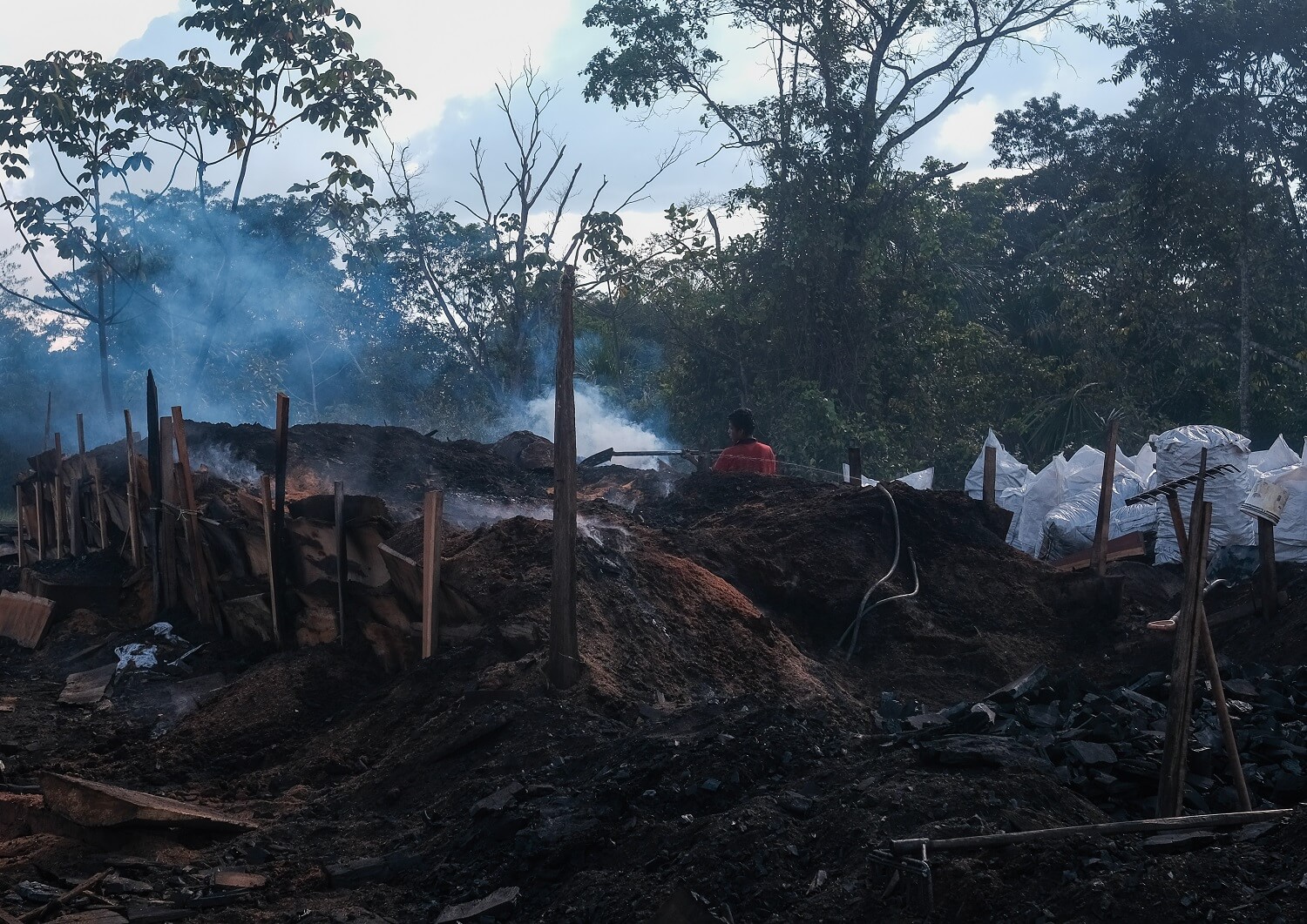
PROCESS.
The charcoal, which comes from sawmill residues, is produced in artisanal ovens (parvas) at high temperatures and without supervision of the particles emitted into the air.
Photo: OjoPúblico.
MINAM, despite repeated communications from OjoPúblico, has not responded whether they have done any monitoring activities with regional governments on the burning of wood residues for coal production. Nor have they informed our request to find out if the sector had any air quality reports in the Amazon.
The former Vice-Minister of Environmental Management, Mariano Castro Sanchez Moreno, expressed that MINAM guarantees the application of air quality standards to “safeguard the health of the people”. The former authority also claimed that regional governments must ensure environmental monitoring to prevent pollution and non-compliance with the rules.
“It is utterly important that authorization processes for these coal companies are promoted and their compliance with environmental assessments is verified. On the other hand, they need to prove that they are not affecting unauthorized forests,” he explained.
The Agency for Environmental Assessment and Enforcement (OEFA), the institution in charge of supervising the environmental work and performance of local governments, told OjoPúblico that last year the Ucayali Regional Government declared two of its four 2020 environmental monitoring reports out of time. Additionally, 60 supervisions for extractive and forestry industries were scheduled in the region in the same year, but only 17 were implemented, hardly 28 per cent of execution.
To learn about the work done in the charcoal processing centers, OjoPúblico contacted the press areas of the Ucayali Regional Government and the Regional Forestry and Wildlife Management, but at the close of this report there was no response.
Route and Participants
Although this is an artisanal activity, there are at least ten participants in the sale of charcoal from its transformation to the final consumer. Four researchers came to this conclusion after analyzing this trade in the Ucayali region.
The first link of this productive chain are the landowners, who provide space for building artisanal kilns, called parvas in the Ucayali region. Here, at more than 500 degrees Celsius, the fuel will be produced from waste generated in the centers where the wood is first transformed, also called sawmills.
To support the legal origin of the wood used, these centers are under the supervision of the forest management. However, despite repeated requests for interviews, the Ucayali Regional Government has not responded to OjoPúblico’s request on the work they are doing to ensure that the coal comes from illegal timber.
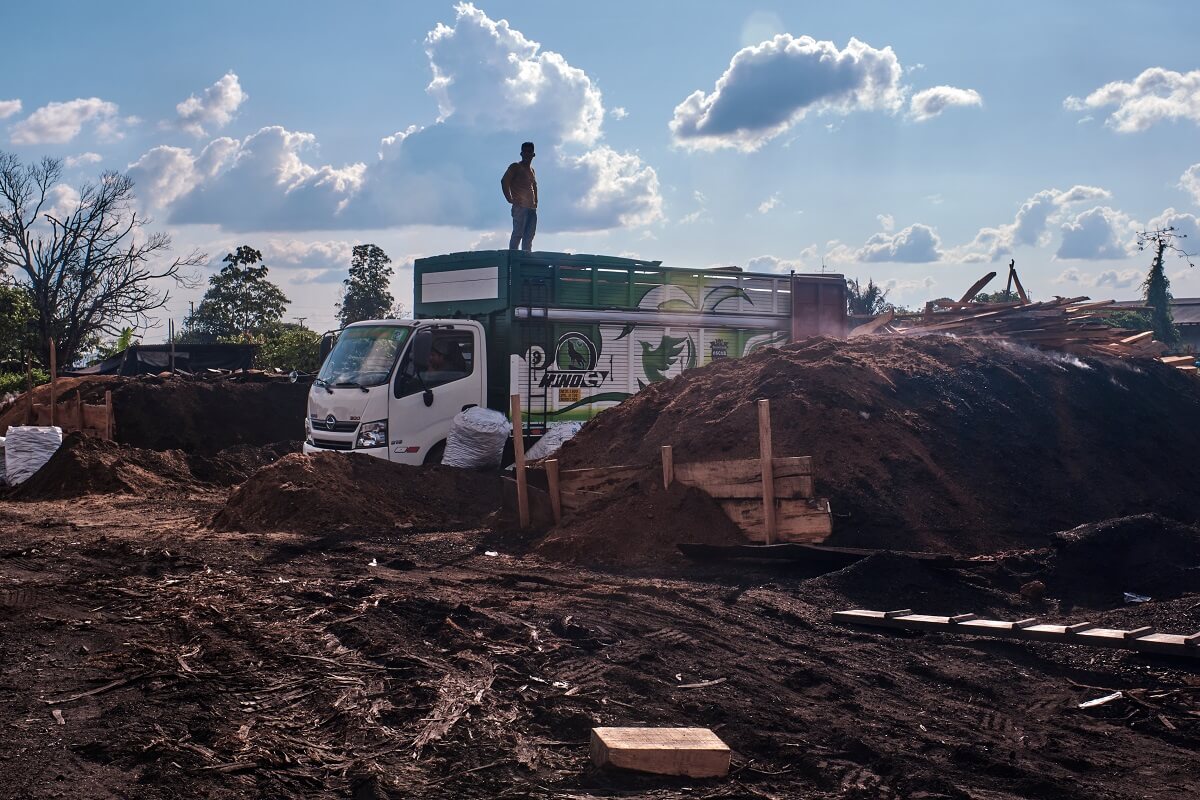
ROUTE.
After being transformed in the artisanal kilns in Ucayali, the charcoal is transported in sacks to Lima and other central Peruvian regions.
Foto: OjoPúblico.
On a second level, the local timber transporters carry this product to be transformed into charcoal. The third players are the so-called coal-makers, who are responsible for the manufacture of charcoal, and their employees. They are followed by creditors, who lend money in exchange for commitments, such as reductions in the price of coal or other contractual arrangements.
The fifth link are the merchants, responsible for the transportation and sale of the coal until it is distributed to wholesalers in Lima. Then we have the local suppliers, who distribute the lower quality product to Pucallpa and other markets in the region.
The so-called long-haul carriers carry loads of up to 30 tons to Lima. In the Peruvian capital, the participants in the charcoal business are the wholesalers or buyers of large quantities of the product. Market sellers are also listed as responsible for distributing the product to street vendors, small restaurants, and private customers. In the final stage, we have urban consumers or bulk buyers of charcoal from wholesalers.
As part of their findings, the researchers also determined that kinship networks were important for charcoal production and trade, even in wholesale warehouses in Lima owned by family members of traders in Pucallpa.
Alternatives to Charcoal
The academic vice-rector of Universidad Nacional Agraria La Molina is also a forestry engineer with more than 40 years of experience in the sector. Héctor Gonzales Mora explained that the production of the so-called activated carbon could be promoted, as this can be used not only as fuel, but also as an input for industrial materials or in the food industry, with a market value up to US$1,000 per kilo.
Unlike the plant-based type, in the activated coal process wood or other materials are not only burned at high temperatures (more than 500 degrees) but are mixed with gases and water vapor to “activate” it. However, according to vice-rector Gonzales, coal makers are not much interested in its production because of the investment needed by their technology.
“If you are going to get into the coal business you have to promote development. Delivering performance and efficiency, that's the idea. In addition to good forest management, charcoal must have quality, efficiency, higher yields and, above all, greater value added,” Gonzales Mora explained.
The university authority also proposed the use of the husk of coconuts or other fruits to generate fuel with less impact on the environment. This has also been the path used by EcoCarbon, a company focused on generating this type of fuel from biomass, residues obtained during the farming of corn, coffee, cocoa, sugar cane, and other products grown in the Madre de Dios , San Martin and Ucayali regions.
“The first benefit of biomass is that it does not deforest, the second is that we reuse the waste, and the third is that the smoke from this activity is captured and fertilizer is generated to improve the plantations in the area," said Ivan Rojas Garcia, general manager of EcoCarbon.
The sustainability of charcoal production in Peru can be found in fruit shells or organic wastes. The charcoal industry must choose between these new ways of processing this fuel or trading with a product whose origin in the forest is suspected of coming from deforestation.
 Tienes reportajes guardados
Tienes reportajes guardados










